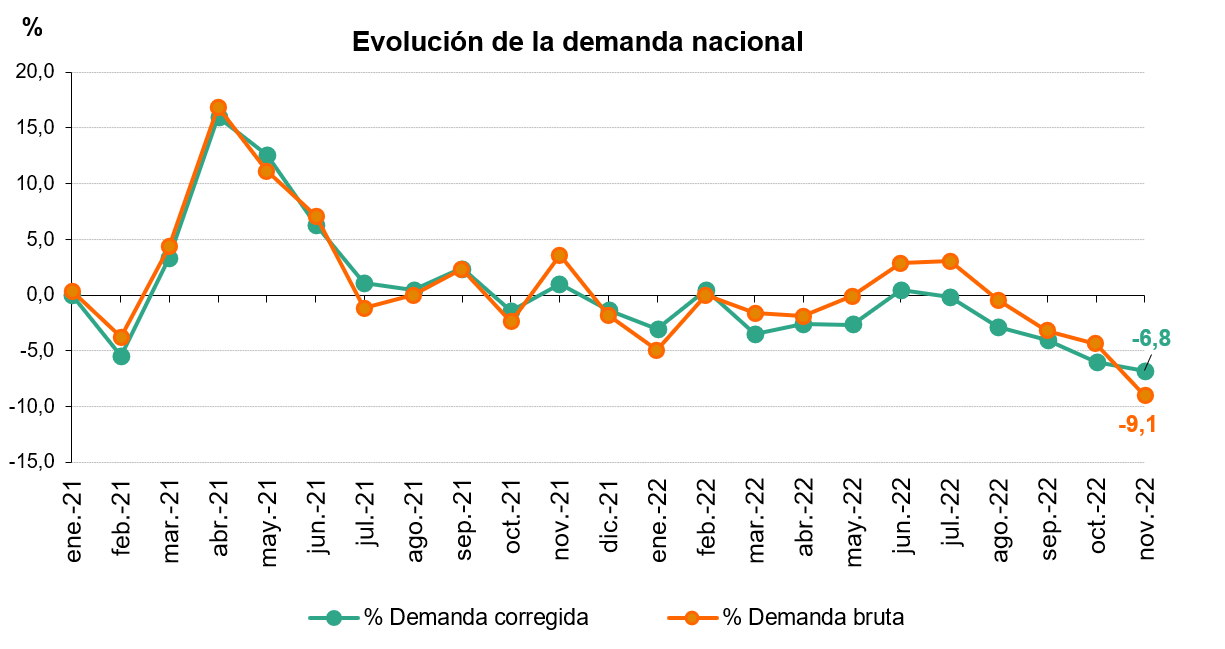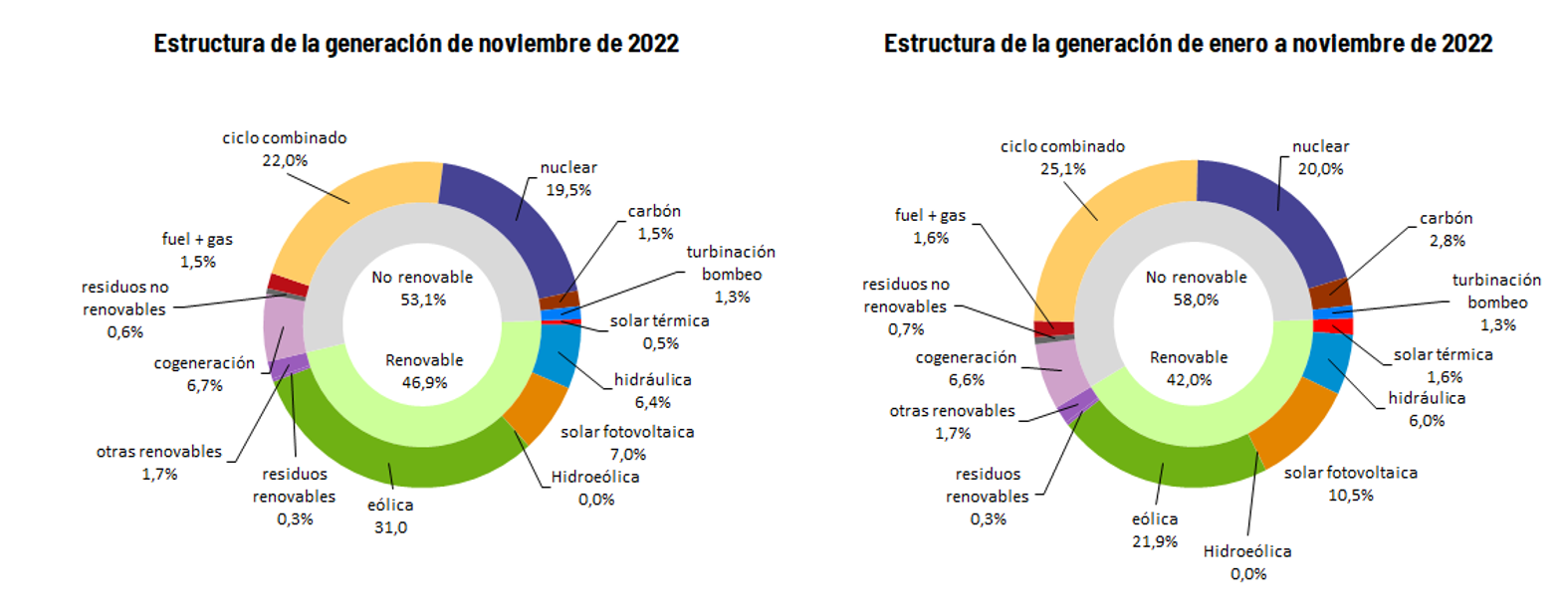For 40 years, we've been driving our country's economic and social progress. Four decades shaping Spain.
Demand for electricity in Spain fell 6.8% in November
- This decrease was observed after having factored in the influence of seasonal and working patterns during the month
- In gross terms, demand is estimated at 19,495 GWh, 9.1% less than in November 2021
- This month, wind was the technology that most contributed to the production of electricity with 31% of the total, its highest share since December 2020. Renewables, as a whole, produced 46.9% of the generation mix, the highest share since May this year
After having factored in the influence of seasonal and working patterns, national electricity demand decreased by 6.8% in November compared to the same month last year. In gross terms, demand is estimated at 19,495 GWh, down 9.1% on November 2021.

Thus, in the first eleven months of 2022, according to provisional data, after having factored in the influence of seasonal and working patterns, demand is 2.8% lower than that recorded in the same period the previous year. During this time, the national electricity system has registered a gross demand of 230,264 GWh, 1.8% less year-on-year.
Renewables generated 5.6% more electricity this November than in the same month in 2021, registering 10,200 GWh, reaching a share of 46.9% of the total generation mix nationwide for the month; a share in the energy mix not seen since May of this year. On the other hand, 67.3% of electricity production in November was obtained using zero-carbon energy technologies.
Thus, wind power generation in November stood at 6,733 GWh and accounted for 31% of the total, its highest share in the mix since December 2020. Meanwhile, solar photovoltaic, which totalled 1,518 GWh this month, increased its production by 12.6% compared to November 2021 and reached a share of 7% of the generation mix nationwide. For its part, hydroelectric generation increased by 16% compared to November 2021, producing 1,392 GWh.

21 November, a historic day for wind energy
On Monday, 21 November, wind power production reached 416 GWh, recording a share of 52.8% of the total daily energy generated, the highest share of this technology since Red Eléctrica has been keeping daily records.
In fact, at 8:55 p.m. on 21 November, wind turbines in Spain produced 20,607 MW of instantaneous power, setting a new all-time record.
Demand for electricity in the peninsular system
Demand for electrical energy on the peninsula was 7.1% lower than in November 2021. After having factored in the influence of seasonal and working patterns, demand stood at 18,379 GWh, a figure that is 9.4% less than that recorded in gross terms in the same month of 2021.
In the first eleven months of 2022, after having factored in the influence of seasonal and working patterns, demand was 3.4% lower than in the same period last year.
During November, and according to data estimated at the time of this press release, 48.6% of electricity generation on the mainland came from renewable sources and 70% was obtained using zero-carbon energy technologies. Furthermore, wind power increased by 18.9% compared to 2021 and registered 6,628 GWh, accounting for 32% of the total, while solar photovoltaic, with 7.1% of the generation mix, increased its production by 11.6% compared to the same month last year.
Demand for electricity in the Balearic Islands and the Canary Islands
Electricity demand in the Balearic Islands during November increased by 8.4% after having factored in the influence of seasonal and working patterns. In gross terms, monthly demand is estimated at 362,716 MWh, up 11.2% on the figure recorded in November 2021.
In terms of generation, combined cycle, with a 77% share of the energy produced in the Balearic Islands, was the leading technology in the archipelago in November. Renewable energy obtained using zero-carbon energy technologies in the Balearic Islands generated 8.9% of the total. In addition, during this month, the submarine link between the mainland and Majorca contributed to covering 15.3% of the electricity demand in the Balearic Islands.
Regarding the Canary Islands, electricity demand, after factoring in the influence of seasonal and working patterns, increased by 2.5% compared to the same month the previous year. Thus, in gross terms, demand stood at 722,887 MWh, up 2.7% year-on-year.
With regard to electricity generation in the Canary Islands, combined cycle, with 44.1% of the total generation, was also the leading technology in November, while renewables and zero-carbon energy technologies accounted for 18% of production, with wind power representing 14.4% of the total mix on the islands.
Consult our Daily Balance Report for more information on the National, Peninsular, Balearic Islands and Canary Islands electricity systems as at the close of November.
Downloads












